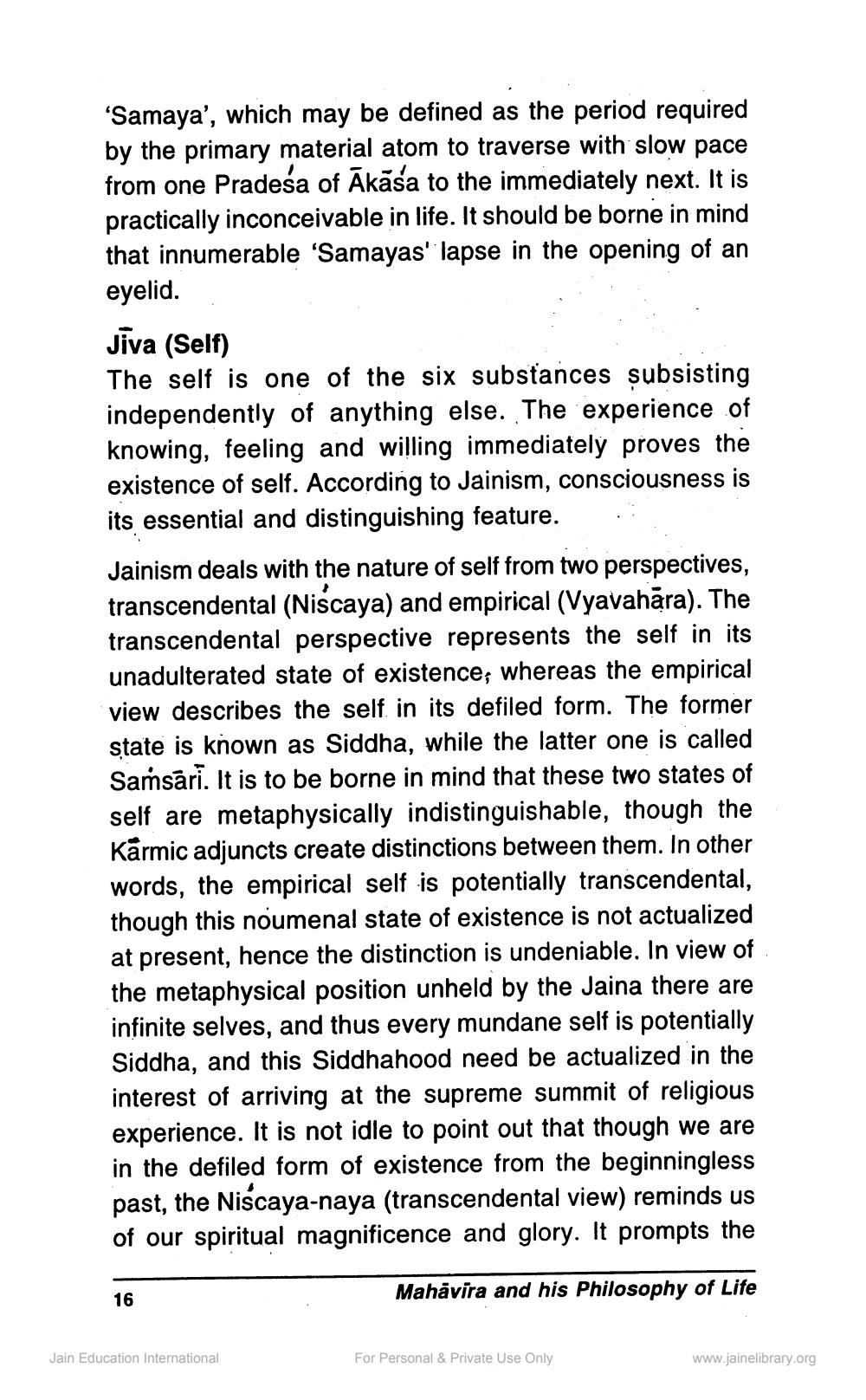________________
'Samaya', which may be defined as the period required by the primary material atom to traverse with slow pace from one Pradesa of Ākāśa to the immediately next. It is practically inconceivable in life. It should be borne in mind that innumerable 'Samayas' lapse in the opening of an eyelid. Jiva (Self) The self is one of the six substances subsisting independently of anything else. The experience of knowing, feeling and willing immediately proves the existence of self. According to Jainism, consciousness is its essential and distinguishing feature. . Jainism deals with the nature of self from two perspectives, transcendental (Niscaya) and empirical (Vyavahara). The transcendental perspective represents the self in its unadulterated state of existence; whereas the empirical view describes the self in its defiled form. The former state is known as Siddha, while the latter one is called Saṁsāri. It is to be borne in mind that these two states of self are metaphysically indistinguishable, though the Karmic adjuncts create distinctions between them. In other words, the empirical self is potentially transcendental, though this noumenal state of existence is not actualized at present, hence the distinction is undeniable. In view of the metaphysical position unheld by the Jaina there are infinite selves, and thus every mundane self is potentially Siddha, and this Siddhahood need be actualized in the interest of arriving at the supreme summit of religious experience. It is not idle to point out that though we are in the defiled form of existence from the beginningless past, the Niscaya-naya (transcendental view) reminds us of our spiritual magnificence and glory. It prompts the
16
Mahavira and his Philosophy of Life
Jain Education International
For Personal & Private Use Only
www.jainelibrary.org




